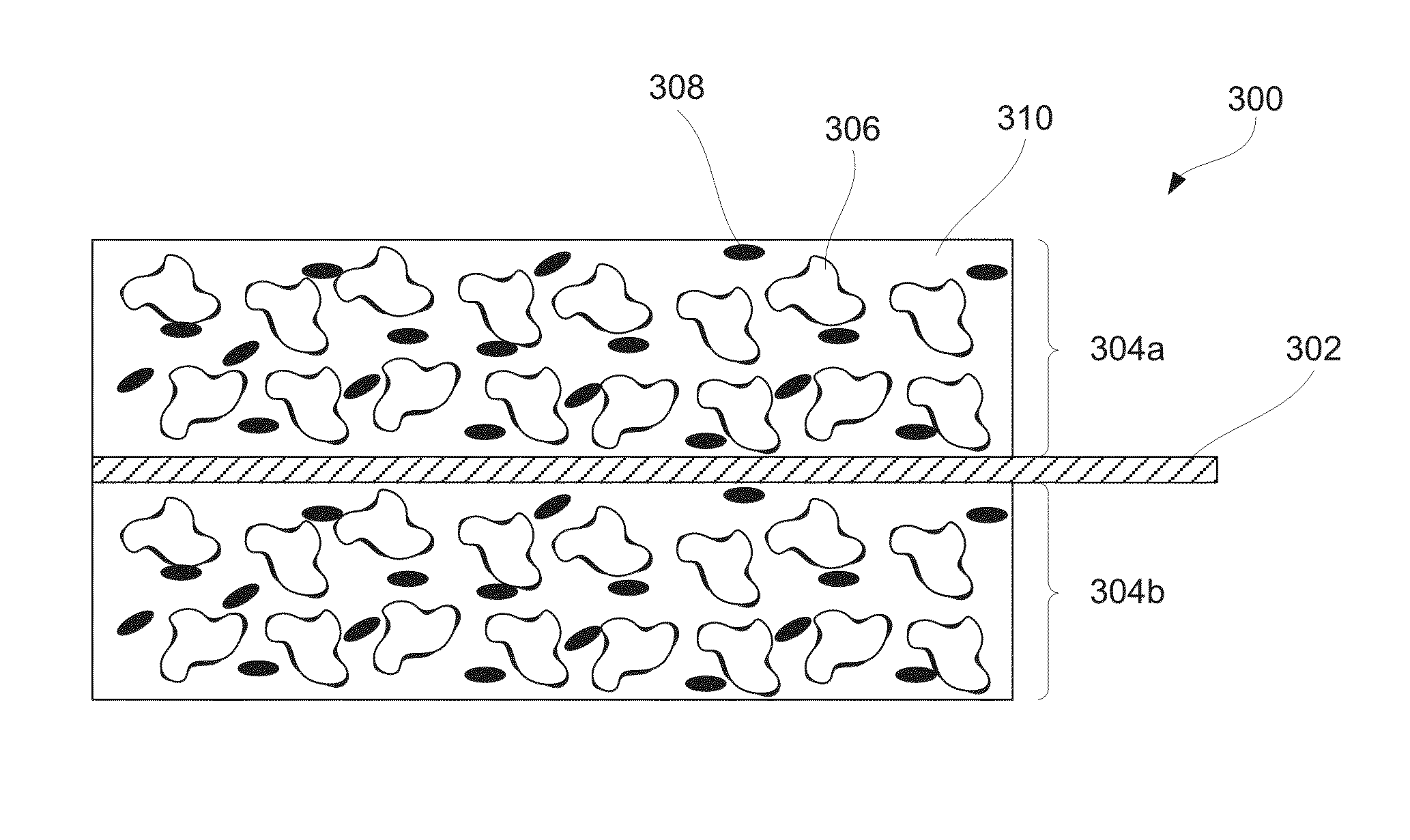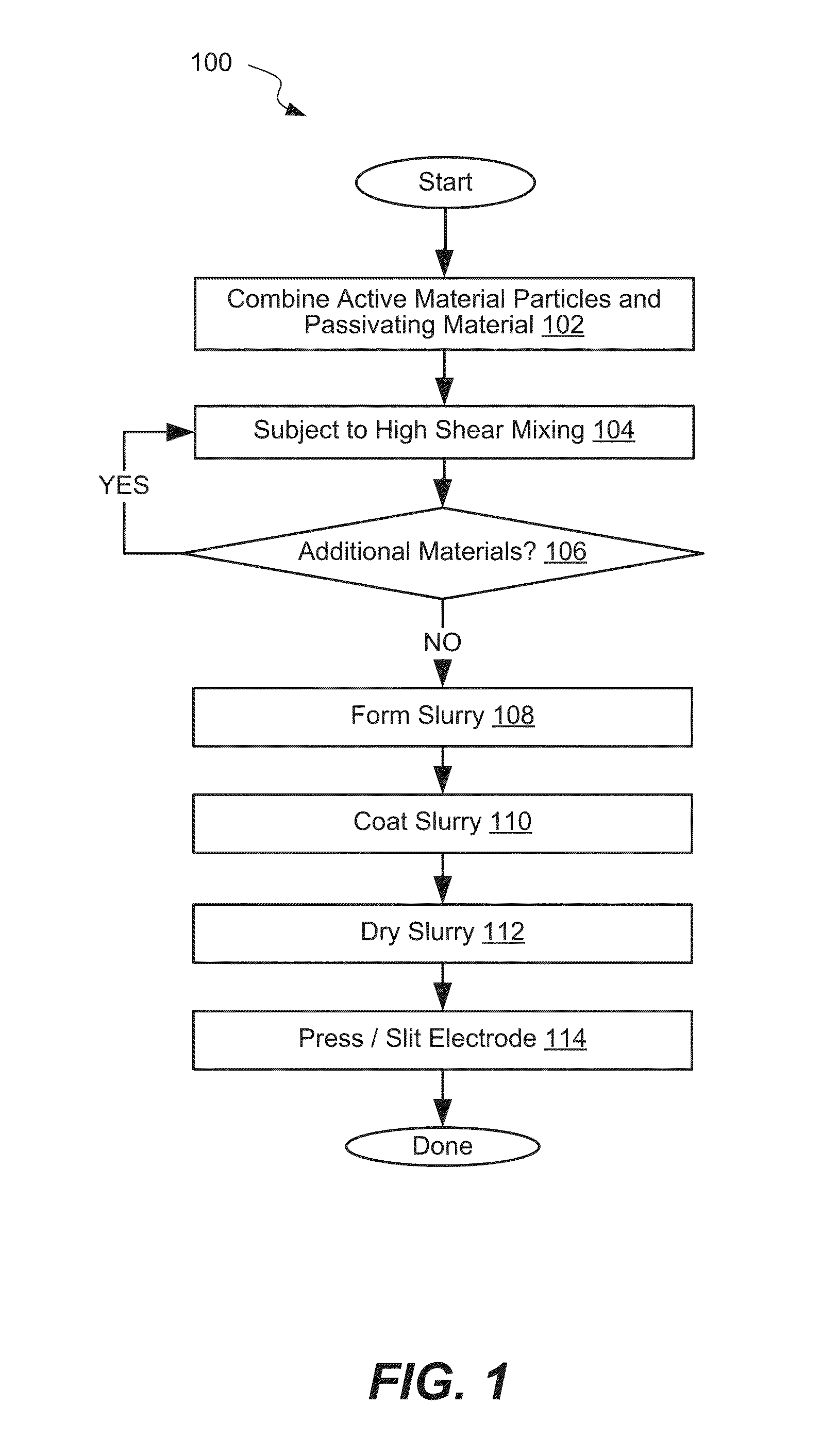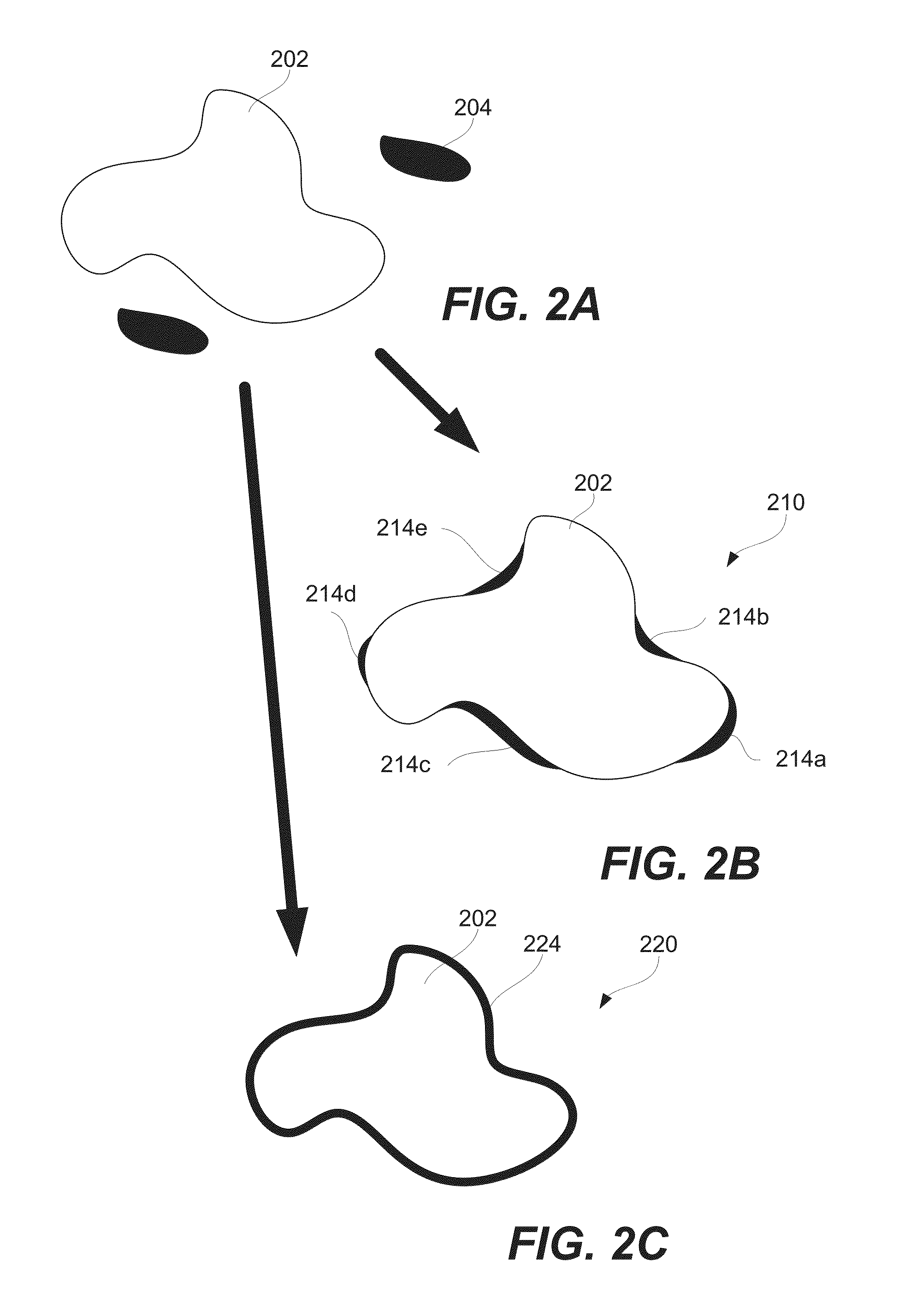Surface passivation of active material particles for use in electrochemical cells
- Summary
- Abstract
- Description
- Claims
- Application Information
AI Technical Summary
Benefits of technology
Problems solved by technology
Method used
Image
Examples
case 402
[0050]Case 402 may be rigid, particularly for lithium ion cells. Other types of cells may be packed into a flexible, foil-type (polymer laminate) case. A variety of materials can be chosen for case 402. Selection of case materials depends in part on a polarity of case 402. If case 402 is connected to positive electrode 406 as, e.g., show in FIG. 4, case 402 may be formed from titanium 6-4, other titanium alloys, aluminum, aluminum alloys, and 300-series stainless steel. On the other hand, if case 402 is connected to negative electrode 404, then case 402 may be made from titanium, titanium alloys, copper, nickel, lead, and stainless steels. In some embodiments, case 402 is neutral and may be connected to an auxiliary electrode made, for example, from metallic lithium. An electrical connection between case 402 and an electrode may be established by direct contact between case 402 and this electrode (e.g., an outer wind of the jelly roll), by a tab connected to the electrode and case 4...
PUM
| Property | Measurement | Unit |
|---|---|---|
| Fraction | aaaaa | aaaaa |
| Force | aaaaa | aaaaa |
| Electrical conductivity | aaaaa | aaaaa |
Abstract
Description
Claims
Application Information
 Login to View More
Login to View More - R&D
- Intellectual Property
- Life Sciences
- Materials
- Tech Scout
- Unparalleled Data Quality
- Higher Quality Content
- 60% Fewer Hallucinations
Browse by: Latest US Patents, China's latest patents, Technical Efficacy Thesaurus, Application Domain, Technology Topic, Popular Technical Reports.
© 2025 PatSnap. All rights reserved.Legal|Privacy policy|Modern Slavery Act Transparency Statement|Sitemap|About US| Contact US: help@patsnap.com



